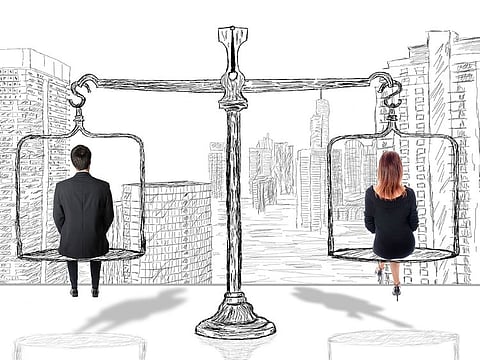It is in workplaces where gender diversity still needs some work
"If COVID-19 widened such biases, then it’s time they change," says Alisha Moopen of Aster

While we still have a long way to go to see a world free of bias, stereotypes and discrimination, we are edging towards workplaces with diverse, equitable, and inclusive values. However, this cannot be completely achieved until difference is valued and forges women’s equality at the workplace.
Women and men bring different strengths to the table, and the strongest companies are those able to utilise, leverage, and embrace these differences. Globally, the pandemic has been regressive for gender equality in the workforce due to its disproportionate impact on women. As per McKinsey, if we act to strengthen gender equality, we could add $13 trillion to global GDP by 2030.
This has proven to be true in the UAE where gender balance is top priority and reflects in major leadership roles being held by women. The UAE has one of the world’s highest rates of female participation in the government, with women making up 50 per cent of the Federal National Council members. From leading the Hope probe to Mars to successfully positioning the country as a leader on the global stage through Expo 2020 during one of the most difficult times in history, women of the UAE have shown the way.
That feeling of entitlement
As women reflect on how much they have achieved in business and the workplace since 2020, one of the biggest challenges that needs to be addressed is the gap in opportunities. timely intervention from government authorities helped women to strike a balance as work from home became part of the new normal. However, an ‘entitlement gap’ between men and women — a feeling of not being as deserving as men when it comes to pay rises, promotions and career progression — remains a hurdle, according to a research commissioned by LinkedIn.
The research shows the way women have been socially conditioned to feel less entitled than men. In today’s economy, nations that embrace these differences will experience much better outcomes. Growing women’s influence brings inclusion, and this inclusion brings and builds skills, thoughts, and tools to manage and win in this changing world.
Still, hurdles persist
It is about time that the world moves ahead of gender biases and stereotypes and uplifts women to do what they are truly capable of. But the road ahead is rough.
Let’s take this example; despite the massive female workforce in healthcare, the numbers dwindle as you get to the senior management levels. Having a woman for just a namesake and to comply with some guidelines, or to show diversity and inclusion, will not suffice. It needs to be a more structured change where we commit to 30-40 per cent of leadership roles being occupied by women.
All decision-making processes should aim for equal representation, whether in boardrooms and senior executive leadership, or in parliaments and local government. Governments must outlaw any form of gender-discrimination. Employers should be more active in fighting inequality and leveraging their positions and influence to enable everyone’s success at the workplace.
On the other hand, individuals should help create an atmosphere of acceptance, equality, and respect in their workplaces by being mindful and inclusive. Importantly, everyone has an obligation to raise their voice against discrimination whenever we observe it.
Change home stereotypes too
For all the changes to take effect and be sustainable in the workforce, we need to start with the roles and attitudes that persist at home. The right narrative around boys and girls working alongside each other should be the norm. Housework and chores should be shared between parents to again demonstrate managing the home is not just assumed as the woman’s duty.
These legacy systems need to be re-engineered and it needs to start at the nucleus of the family. How we go back and behave at home after work, will impact the generational thinking which we need to shift consciously. The policies can then create the right atmosphere that is not in conflict with the inner belief systems.
Changing this belief system requires much more deep-rooted work on actively and consciously making the home first, and then world at large gender neutral.
Sign up for the Daily Briefing
Get the latest news and updates straight to your inbox




